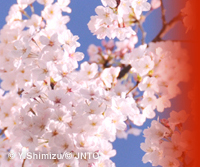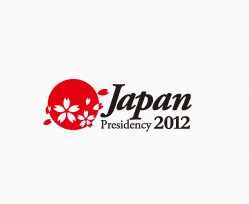
main content


Outline
Shinkansen; high-speed railways in Japan, is now constructed based on the Nationwide Shinkansen Railway Development Law. The Laws prescribed among others network planning and construction cost sharing principles.
1) Network
Network of 2400 km is in operation, 420 km is under construction and about 540 km is planned to be constructed. In addition to the planned lines, Chuo Shinkansen, the first MAGLEV system with the maximum speed of 550km/h, is planned to start operation in 2027 connecting Tokyo and Nagoya (300km).
Network of 2400 km is in operation, 420 km is under construction and about 540 km is planned to be constructed. In addition to the planned lines, Chuo Shinkansen, the first MAGLEV system with the maximum speed of 550km/h, is planned to start operation in 2027 connecting Tokyo and Nagoya (300km).
2) Cost sharing
The costs for construction of new high-speed railway (except Chuo Shinkansen which is mainly paid by JR Central) are shared by national government and local governments along the line. National government pays 2/3 of construction costs, local governments bear the rest of it.
JRTT (the Japan Railway Construction, Transport and Technology Agency) constructs high-speed railways by receiving fund from national and local governments. After completion, JRTT owns the tracks and lease it to the operators, Japan Railways. JR pays rent for the tracks to JRTT yearly.
In order to prevent building financially unviable railways, government approves construction when the project satisfies the following criteria:
a) Stable financial resources are secured for the project,
b) The project is profitable (operating cost should be covered by the revenue from fare)
c) The investment is effective (The benefit should be larger than the cost)
d) The construction is agreed by the operator (JR)
e) There are consents of concerned local governments to terminating operations of parallel JR conventional lines.
The costs for construction of new high-speed railway (except Chuo Shinkansen which is mainly paid by JR Central) are shared by national government and local governments along the line. National government pays 2/3 of construction costs, local governments bear the rest of it.
JRTT (the Japan Railway Construction, Transport and Technology Agency) constructs high-speed railways by receiving fund from national and local governments. After completion, JRTT owns the tracks and lease it to the operators, Japan Railways. JR pays rent for the tracks to JRTT yearly.
In order to prevent building financially unviable railways, government approves construction when the project satisfies the following criteria:
a) Stable financial resources are secured for the project,
b) The project is profitable (operating cost should be covered by the revenue from fare)
c) The investment is effective (The benefit should be larger than the cost)
d) The construction is agreed by the operator (JR)
e) There are consents of concerned local governments to terminating operations of parallel JR conventional lines.
Background
In 1964, Tokaido Shinkansen, the first high-speed railways in Japan, started its operation.
In 1970, The National Shinkansen Railway Development Law was enacted. The network plan was determined by the government.
Although Tokaido and Sanyo Shinkansen were initially constructed and operated by former JNR (Japan National Railways; Japan Railways after its privatization), in 1997, construction and operation concerning newly developing line were separated in order not to impose an excessive burden of construction costs on JRs, privatized operating companies.
In 2011, it was decided that JR Central construct and operate the Chuo Shinkansen, which is planned to start operation between Tokyo and Nagoya in 2027 and will be extended to Osaka by 2045.
In 1970, The National Shinkansen Railway Development Law was enacted. The network plan was determined by the government.
Although Tokaido and Sanyo Shinkansen were initially constructed and operated by former JNR (Japan National Railways; Japan Railways after its privatization), in 1997, construction and operation concerning newly developing line were separated in order not to impose an excessive burden of construction costs on JRs, privatized operating companies.
In 2011, it was decided that JR Central construct and operate the Chuo Shinkansen, which is planned to start operation between Tokyo and Nagoya in 2027 and will be extended to Osaka by 2045.
Outcome
About 2,400km of high-speed railways are now operated and about 420 km are under construction.
Key words
high- speed railways, train,
Inquiry point
Railway Bureau, MLIT Japan
Annexes
-
Construction of high-speed railways
 [PDF:183KB]
[PDF:183KB]
-
High-speed railways network
 [PDF:82KB]
[PDF:82KB]
-
http://www.jrtr.net/jrtr48/pdf/f06_Tak.pdf
 [PDF]
[PDF]
-
http://www.jrtr.net/jrtr57/index.html
 [PDF]
[PDF]
-
http://www.jrtr.net/jrtr40/pdf/f04_tak.pdf
 [PDF]
[PDF]
-
http://www.jrtr.net/jrtr40/pdf/f14_kit.pdf
 [PDF]
[PDF]
-
http://www.jrtr.net/jrtr40/pdf/f34_jre.pdf
 [PDF]
[PDF]
-
http://www.jrtr.net/jrtr40/pdf/photo.pdf
 [PDF]
[PDF]
-
http://english.jr-central.co.jp/company/ir/annualreport/_pdf/annualreport2011-05.pdf
 [PDF]
[PDF]


